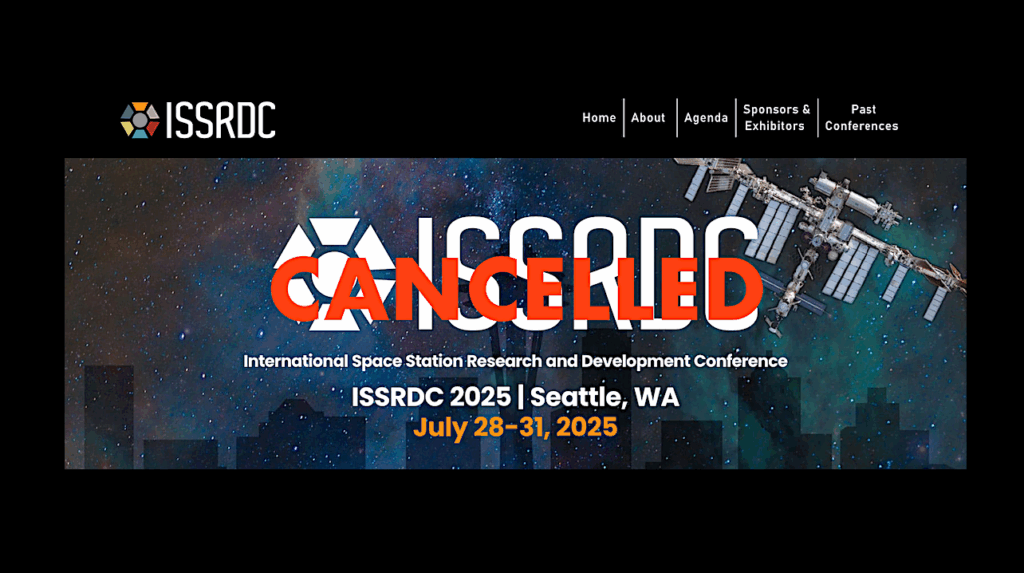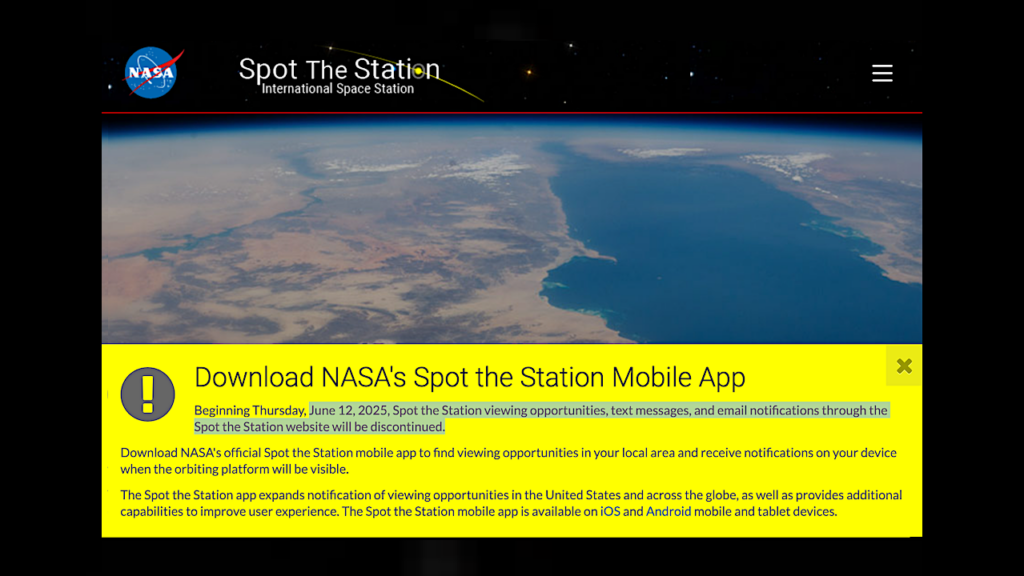The Weekly Dual ISS Status Reports are Out!
 Editor’s note: Once again NASA PAO staff at HQ just can’t stand the thought of just one weekly space station status report going out – without having an HQ spin on it – so they take one developed at JSC – change a few paragraph breaks, and then issue a second one from HQ. They do this every week. It would be one thing if they just re-issued the JSC report verbatim, but no, HQ has to fiddle with things – even if the fiddling is utterly pointless and a waste of taxpayer dollars.
Editor’s note: Once again NASA PAO staff at HQ just can’t stand the thought of just one weekly space station status report going out – without having an HQ spin on it – so they take one developed at JSC – change a few paragraph breaks, and then issue a second one from HQ. They do this every week. It would be one thing if they just re-issued the JSC report verbatim, but no, HQ has to fiddle with things – even if the fiddling is utterly pointless and a waste of taxpayer dollars.
Gee, if only they were this dilligent with other things – like keeping tabs on politcal appointee behavior…
You can check out this week’s silly HQ edit of JSC’s report below:
From: [email protected] Subject: International Space Station Status Report: SS06-007 Date: February 24, 2006 2:53:32 PM EST To: [email protected] Feb. 24, 2006 Allard Beutel, Headquarters, Washington, (202) 358-4769 James Hartsfield, Johnson Space Center, Houston, (281) 483-5111 INTERNATIONAL SPACE STATION STATUS REPORT: SS06-007 Aboard the International Space Station this week, Expedition 12 Commander Bill McArthur and Flight Engineer Valery Tokarev have been preparing for upcoming spacecraft arrivals and departures. Managers decided to postpone the planned station “campout” this week until next month. It will test procedures to shorten the preparation required for spacewalks. It was delayed after a device called the Major Constituent Analyzer (MCA) could not be activated following maintenance work by the crew. The device measures the composition of the station’s air. McArthur replaced a major component of the MCA last week, the mass spectrometer, but attempts to activate the unit were unsuccessful. McArthur continued troubleshooting the device Saturday. Engineers suspect the problem may be damaged electrical connectors and are evaluating ways to fix them. The crew began preparations for the next shuttle mission, STS-121, targeted for launch to the station no earlier than May. McArthur made room in the storage racks inside the Destiny lab for new equipment scheduled to arrive on Space Shuttle Discovery. He cleared space in EXPRESS Rack 3 for a European Space Agency experiment facility called the European Modular Cultivation System. The facility will house biological experiments dealing with the effects of gravity on plant cells, roots and physiology. Tokarev and McArthur also continued packing the station’s Progress 19 cargo spacecraft with trash, readying it to undock March 3. The supply craft’s thrusters were used a final time to reboost the station Wednesday, increasing the altitude by eight miles.
McArthur continued science work, performing his third session with an experiment called Foot/Ground Reaction Forces During Spaceflight. The experiment investigates how muscles and joints of the legs and feet are used differently in space than on Earth. To gather data, McArthur wore the instrumented Lower Extremity Monitoring Suit, which measures joint angles, muscle activity and forces on the feet as he exercised. The experiment measures the musculoskeletal system and may lead to a better understanding of bone loss during long-duration missions. The SuitSat experiment, an unneeded Russian Orlan spacesuit-turned-satellite, has stopped sending signals. SuitSat was released by Tokarev during a spacewalk Feb. 3. It transmitted recorded voices of school children to amateur radio operators as it orbited the Earth. Hundreds of reports from individuals receiving the faint signal from all over the world were logged at the project’s Web site. For SuitSat information, visit: http://www.suitsat.org For information about the station, including sighting opportunities, visit: http://www.nasa.gov/station For information about NASA and agency programs on the Web, visit: http://www.nasa.gov/home
|
From: [email protected] 2006 Report #8 1 p.m. CST, Friday, Feb. 24, 2006 Aboard the International Space Station this week, Expedition 12 Commander Bill McArthur and Flight Engineer Valery Tokarev have been preparing for upcoming spacecraft arrivals and departures. Managers decided to postpone the planned station "campout" this week until next month. It will test procedures to shorten the preparation required for spacewalks. It was delayed after a device called the Major Constituent Analyzer (MCA) could not be activated following maintenance work by the crew. The device measures the composition of the station’s air. McArthur replaced a major component of the MCA last week, the mass spectrometer, but attempts to activate the unit were unsuccessful. McArthur continued troubleshooting the device Saturday. Engineers suspect the problem may be damaged electrical connectors and are evaluating ways to fix them. The crew began preparations for the next shuttle mission, STS-121, targeted for launch to the station no earlier than May. McArthur made room in the storage racks inside the Destiny lab for new equipment scheduled to arrive on Space Shuttle Discovery. He cleared space in EXPRESS Rack 3 for a European Space Agency experiment facility called the European Modular Cultivation System. The facility will house biological experiments dealing with the effects of gravity on plant cells, roots and physiology. Tokarev and McArthur also continued packing the station’s Progress 19 cargo spacecraft with trash, readying it to undock March 3. The supply craft’s thrusters were used a final time to reboost the station Wednesday, increasing the altitude by eight miles. McArthur continued science work, performing his third session with an experiment called Foot/Ground Reaction Forces During Spaceflight. The experiment investigates how muscles and joints of the legs and feet are used differently in space than on Earth.
To gather data, McArthur wore the instrumented Lower Extremity Monitoring Suit, which measures joint angles, muscle activity and forces on the feet as he exercised. The experiment measures the musculoskeletal system and may lead to a better understanding of bone loss during long-duration missions. The SuitSat experiment, an unneeded Russian Orlan spacesuit-turned-satellite, has stopped sending signals. SuitSat was released by Tokarev during a spacewalk Feb. 3. It transmitted recorded voices of school children to amateur radio operators as it orbited the Earth. Hundreds of reports from individuals receiving the faint signal from all over the world were logged at the project’s Web site. For SuitSat information, visit: http://www.suitsat.org For information about the station, including sighting opportunities, visit: http://www.nasa.gov/station For information about NASA and agency programs on the Web, visit: http://www.nasa.gov/home The next station status report will be issued Friday, March 3, or earlier if events warrant. |







